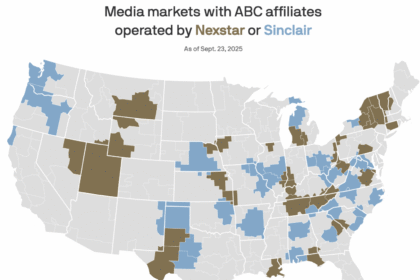While acknowledging that ongoing uncertainty complicates policymaking, Federal Reserve Chair Powell gave a mostly green light for monetary policy easing in September, following a policy pause that has lasted since the end of last year.
Noting that inflation remains elevated, Powell stated that “the balance of risks appears to be shifting.” In particular, the central bank chair noted that downside risks for the labor market are rising. The implication of this observation is that easing is in view for monetary policy given the Fed’s dual mandate of maintaining both price stability and full employment. Markets expect a cut in September.
Powell detailed an important point for the housing demand, that the labor market has avoided large job losses due to policy tightening and the economy has shown “resilience.”
The Fed chair also indicated that inflation pressure is now in the data from tariffs, including a rise in goods prices. However, Powell articulated the view that while tariffs can affect the price level, that effect may not be a persistent impact on inflation and therefore can be consistent with near-term easing of monetary policy. He stated, “…the effects will be short-lived – a one-time shift in the price level.” However, he also warned that “one-time” does not mean all at once and that the effects of tariffs will materialize over an adjustment period.
Moreover, while not addressed in today’s comments, some of the pressure from tariffs is being relaxed as trade deals are arranged and de-escalations of some trade tensions are undertaken. This morning’s action by Canada to drop most retaliatory trade actions against the U.S. is a good example, as is the ongoing discussions with China to achieve a fairer, more sustainable trading relationship.
Powell repeated that housing-related inflation remains on a downward trend. I would add for emphasis that softening of housing market data (including home price weakness that will indirectly affect inflation data) is a dovish sign for future monetary policy given that housing has been the major source of inflation for the last two years.
Summarizing the current data and the monetary policy outlook, Powell concluded his analysis with commentary suggesting a shift in the Fed’s policy stance to easing (perhaps as a preventative cut), while still tied to data:
“In the near term, risks to inflation are tilted to the upside, and risks to employment to the downside—a challenging situation. When our goals are in tension like this, our framework calls for us to balance both sides of our dual mandate. Our policy rate is now 100 basis points closer to neutral than it was a year ago, and the stability of the unemployment rate and other labor market measures allows us to proceed carefully as we consider changes to our policy stance. Nonetheless, with policy in restrictive territory, the baseline outlook and the shifting balance of risks may warrant adjusting our policy stance.
Monetary policy is not on a preset course. FOMC members will make these decisions, based solely on their assessment of the data and its implications for the economic outlook and the balance of risks. We will never deviate from that approach.“
Chair Powell’s comments also emphasize the importance of central bank independence. Politicizing monetary policy would introduce a future inflation premium into the bond market, resulting in reduced investor demand and some additional upward pressure on long-term interest rates, including mortgage rates.
Today’s speech also addressed the Fed’s policy framework, including “flexible average inflation targeting” and the central bank’s 2% target for inflation. Powell committed to the 2% target. While this commitment is important for institutional credibility and bond market confidence, some economists, including myself, question the appropriateness of 2% as a target given U.S. economic and productivity growth. Would, as a theoretical question, a 2.5% inflation target in a period of declining birth rates and rising technological change unanchor inflation expectations for investors?
This is an important question for future monetary policymaking. Nonetheless, today’s speech suggests, and the market expects, that the Fed will resume monetary policy easing at its September meeting.
Discover more from Eye On Housing
Subscribe to get the latest posts sent to your email.









